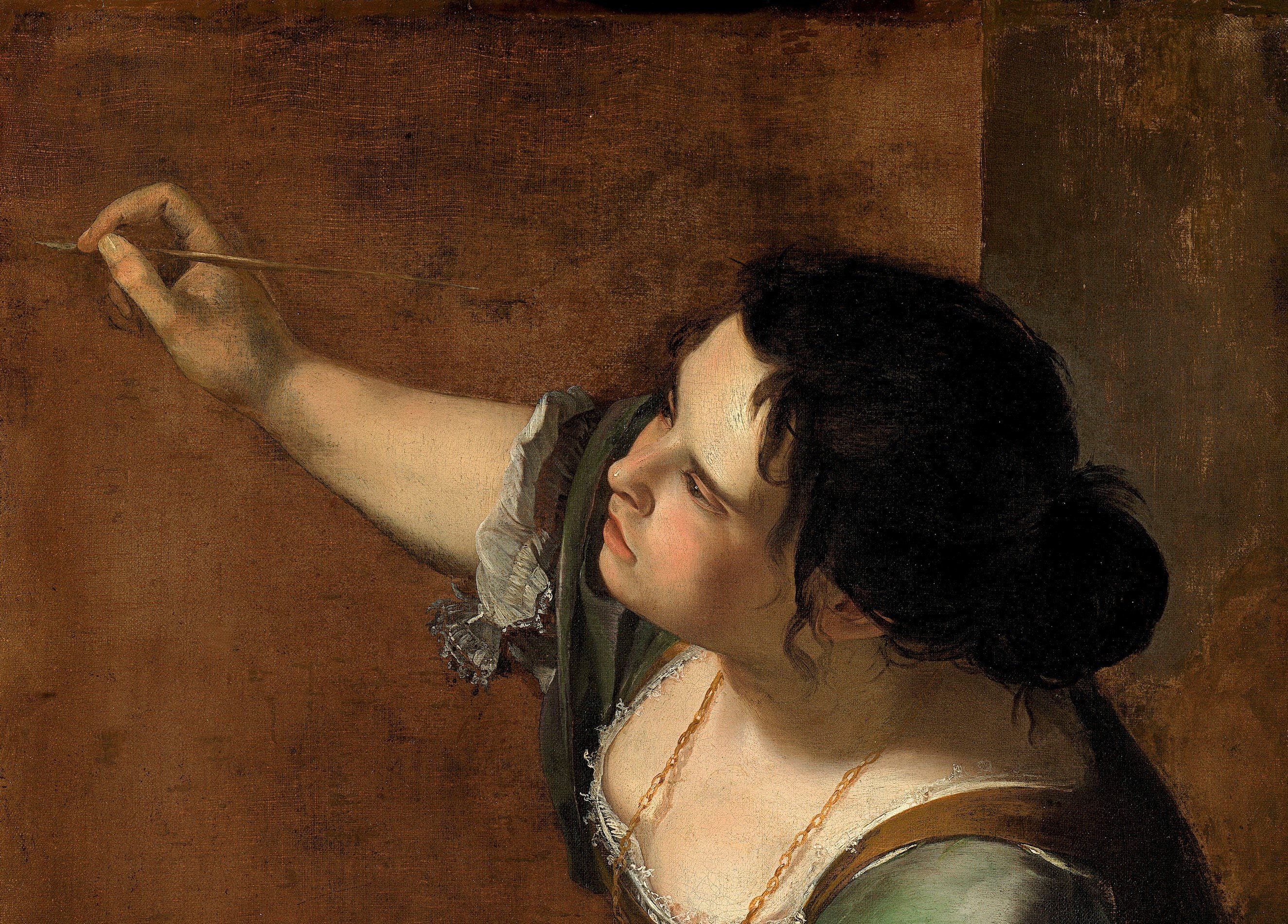
Women Artists
The lives and works of creative women
The Long 18th Century
By the seventeenth century academies were widespread in Europe, though the Royal Academy in England was not founded until 1768. Angelica Kauffmann and Mary Moser, both represented in this trail, were the only two female founder members of the latter. Despite their membership of the institution, the women were still subjected to professional restrictions, which can be demonstrated by Johan Zoffany's painting The Academicians of the Royal Academy, shown here. In this work, all the Academicians are engaged in a life-drawing class, with the exception of Kauffmann and Moser, who appear as portraits on the wall; as women it was not considered appropriate for them to attend life classes. The difficulties that female artists faced in studying human anatomy is a recurring theme of this trail.
While some established women artists were recognised by European academies – the Venetian pastellist Rosalba Carriera, for example, was the first foreign female artist to become a member of the prestigious French Académie Royale de Peinture et de Sculpture in 1720 – equality of educational opportunity was another matter. Women were not admitted to train at the Royal Academy Schools in London until 1860 (though the first female student achieved her place using a strategy of subterfuge, signing her admission work with only her initials) and then had to fight for equal access to teaching and opportunities for decades thereafter.
Some female artists found encouragement in royal quarters. Queen Charlotte, consort of George III, was interested in and supportive of female accomplishments in a variety of arenas, and both Mary Knowles and Caroline Watson benefitted from her patronage. Elisabeth Vigée Le Brun’s career was, to a significant extent, shaped by her relationship with the French queen Marie-Antoinette, of whom she painted around 30 portraits.
Women who did practice as artists faced further prejudice as regards the sort of art they created. Serious subjects, and serious media, were largely the preserve of men. Conventional ideas about femininity influenced what were widely considered the respectable genres for women to work in and the materials thought particularly suitable to their sensibilities and skill. These ‘appropriate’ subjects were often domestic, modest and small-scale, such as still life and portraiture, frequently made using media including watercolours, pastel and embroidery.







